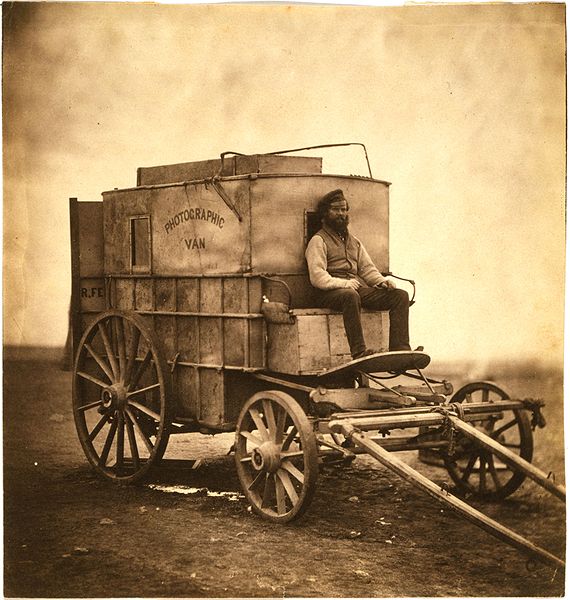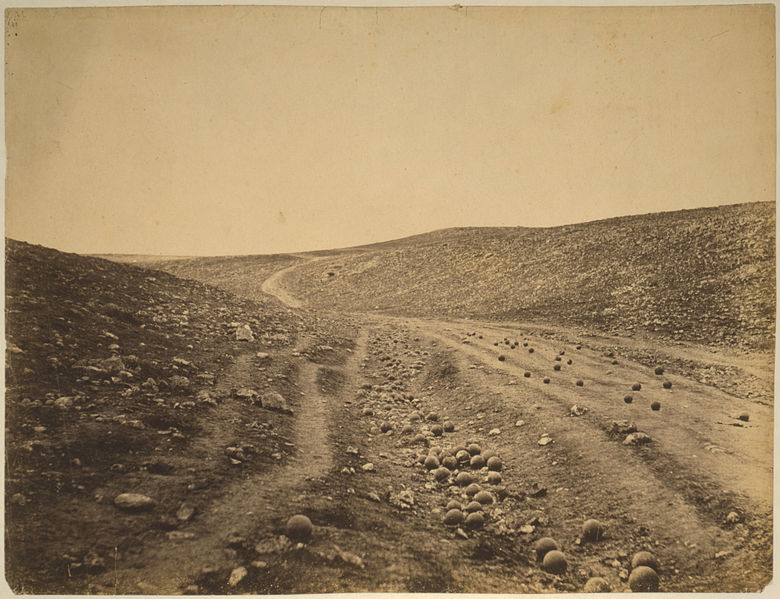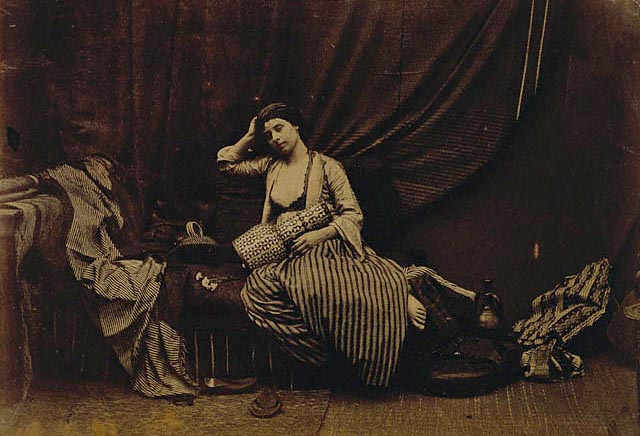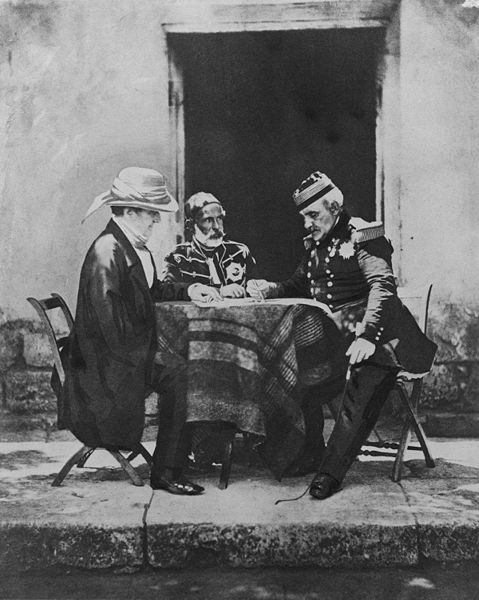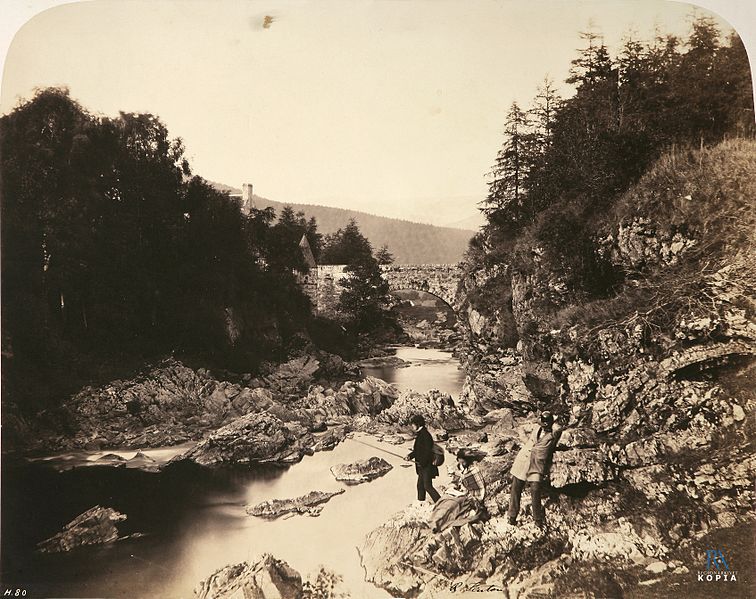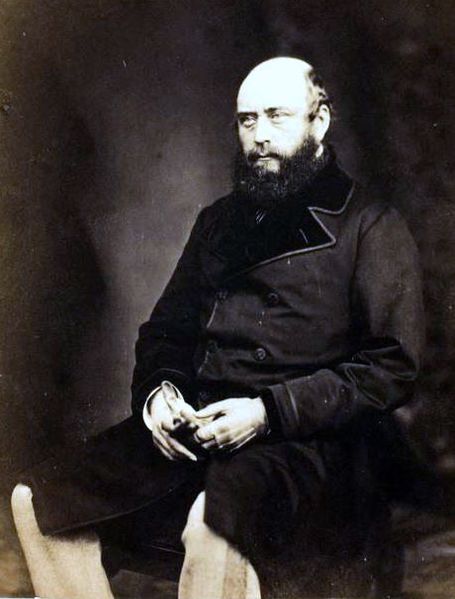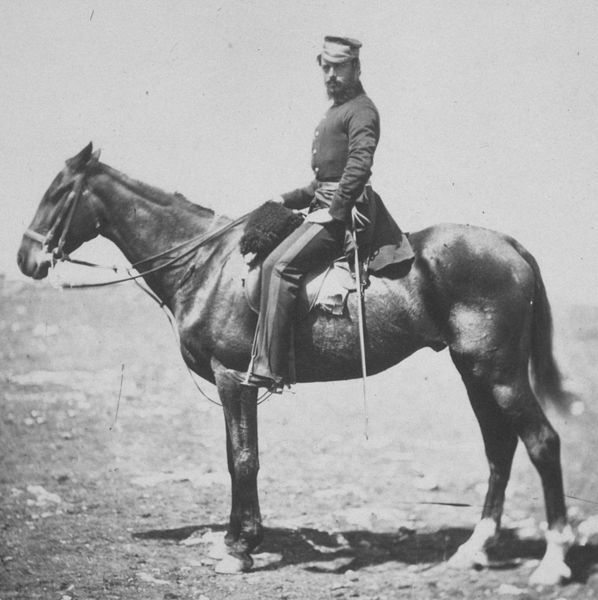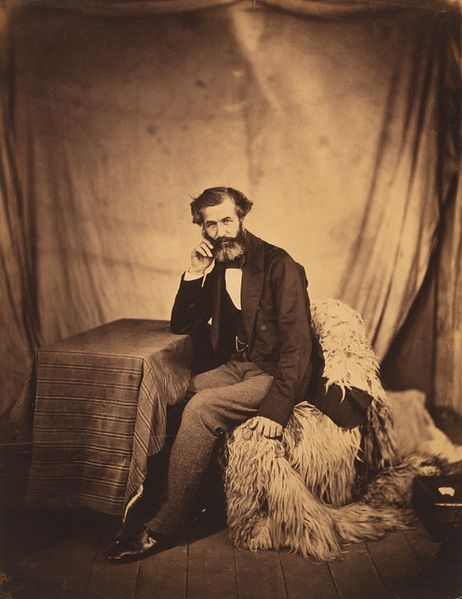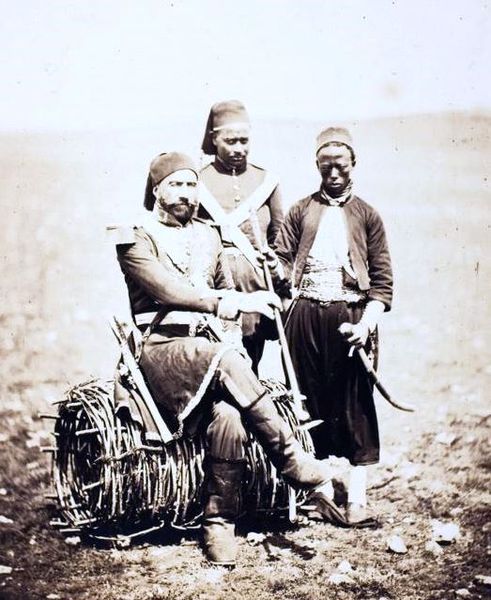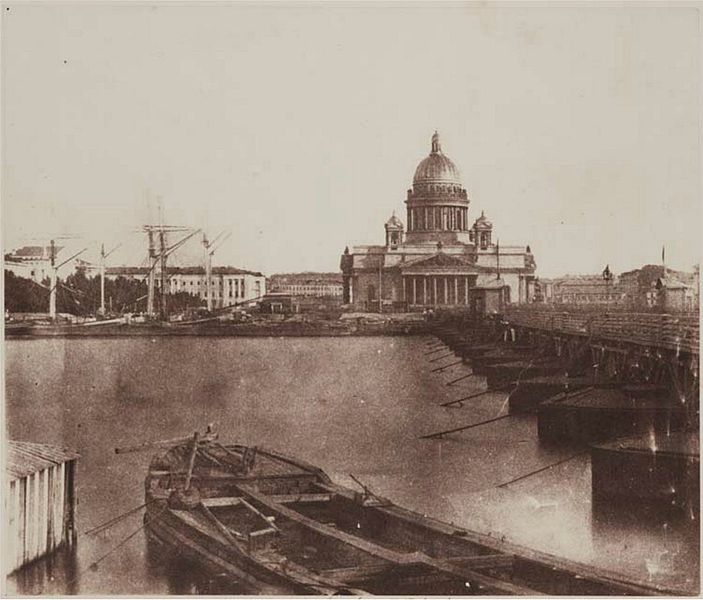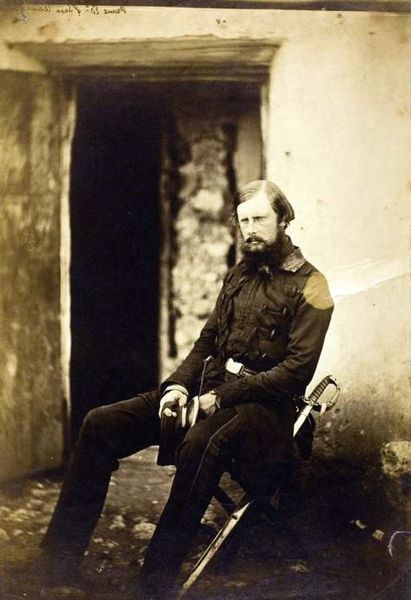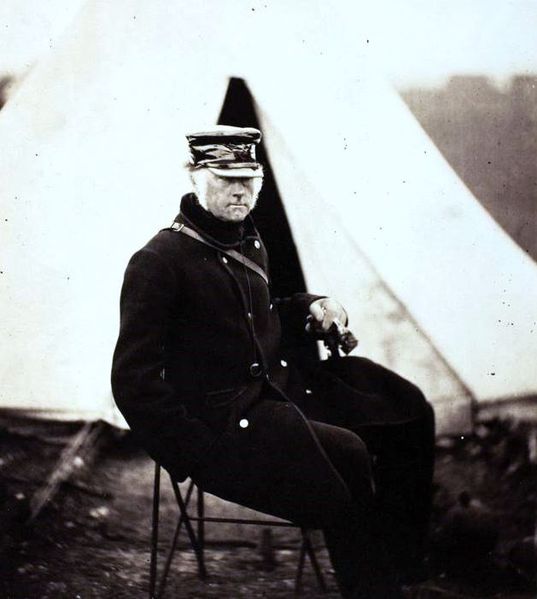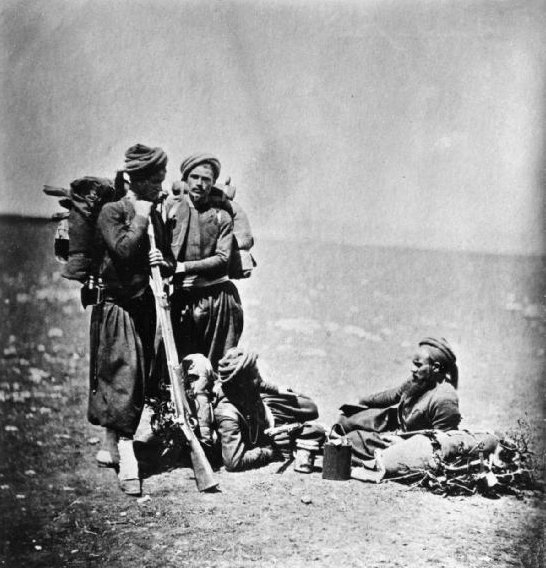<Back to Index>
- Photographer Roger Fenton, 1819
PAGE SPONSOR
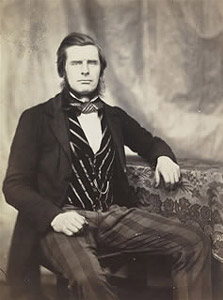
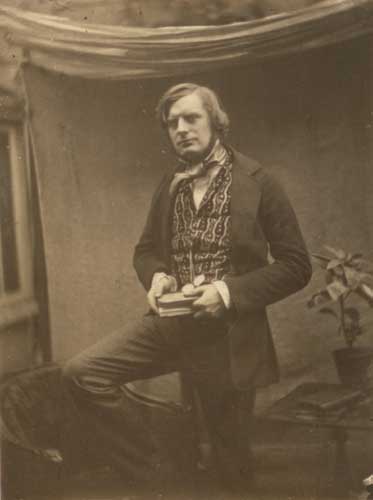
Roger Fenton (28 March 1819 – 8 August 1869) was a pioneering British photographer, one of the first war photographers.
Roger Fenton was born in Crimble Hall, then within the parish of Bury, Lancashire, on 28 March 1819. His grandfather was a wealthy cotton manufacturer and banker, his father a banker and Member of Parliament. Fenton was the fourth of seven children by his father's first marriage. His father had 10 more children by his second wife.
In 1838 Fenton went to University College London where he graduated in 1840 with a "first class" Bachelor of Arts degree, having studied English, mathematics, Greek and Latin. In 1841, he began to study law at University College, evidently sporadically as he did not qualify as a solicitor until 1847, in part because he had become interested in studying to be a painter. In Yorkshire in 1843 Fenton married Grace Elizabeth Maynard, presumably after his first sojourn in Paris (his passport was issued in 1842) where he may briefly have studied painting in the studio of Paul Delaroche. When he registered as a copyist in the Louvre in 1844 he named his teacher as the history and portrait painter Michel Martin Drolling, who taught at the École nationale supérieure des Beaux - Arts, but Fenton's name does not appear in the records of that school. By 1847 Fenton had returned to London where he continued to study painting under the tutelage of the history painter Charles Lucy, who became his friend and with whom, starting in 1850, he served on the board of the North London School of Drawing and Modelling. In 1849, 1850 and 1851 he exhibited paintings in the annual exhibitions of the Royal Academy.
Fenton visited the Great Exhibition in Hyde Park in London in 1851 and was impressed by the photography on display there. He then visited Paris to learn the waxed paper calotype process, most likely from William Fox Henry Talbot, its inventor. By 1852 he had photographs exhibited in England, and traveled to Kiev, Moscow and St. Petersburg making calotypes there, and photographed views and architecture around Britain. His published call for the setting up of a photographic society was answered with its establishment in 1853; the Photographic Society, with Fenton as founder and first Secretary, later became the Royal Photographic Society under the patronage of Prince Albert.
In 1855 Fenton was sent to the Crimean War as the first official war photographer. He had the endorsement of the Duke of Newcastle, secretary of state for war, and the patronage of Queen Victoria and Prince Albert. The resulting photographs may have been intended to offset the general aversion of the British people to an unpopular war and to counteract the occasionally critical reporting of correspondent William Howard Russell of The Times. The photographs were to be converted into woodblocks and published in the less critical Illustrated London News. Fenton took Marcus Sparling as his photographic assistant, a servant and a large van of equipment.
Due to the size and cumbersome nature of his photographic equipment, Fenton was limited in his choice of motifs. Because the photographic material of his time needed long exposures, he was only able to produce pictures of unmoving objects, mostly posed pictures; he avoided making pictures of dead, injured or mutilated soldiers. But he also photographed the landscape, including an area near to where the Light Brigade — made famous in Tennyson's "Charge of the Light Brigade" — was ambushed. In letters home soldiers had called the original valley "The Valley of Death", and Tennyson's poem used the same phrase, so when in September 1855 Thomas Agnew put the picture on show, as one of a series of eleven collectively titled Panorama of the Plateau of Sebastopol in Eleven Parts in a London exhibition, he took the troops' — and Tennyson's — epithet, expanded it as The Valley of the Shadow of Death with its deliberate evocation of Psalm 23, and assigned it to the piece; it is not the location of the famous charge, which took place in a long, broad valley several miles to the southeast.
In 2007 film maker Errol Morris went to Sevastopol to identify the site of this "first iconic photograph of war". He identified the small valley, shown on a later map as "The Valley of the Shadow of Death", as the place where Fenton had taken his photograph. Two pictures were taken of this area, one with several cannonballs on the road, the other with an empty road. Opinions differ concerning which one was taken first. Morris concludes that the photo without the cannonballs was taken first, but he remains uncertain about why balls were moved onto the road in the second picture — perhaps, he notes, Fenton deliberately placed them there to enhance the image. The alternative is that soldiers were gathering up cannonballs for reuse and they threw down balls higher up the hill onto the road and ditch for collection later. Other art historians, such as Nigel Spivey of Cambridge University, identify the images as from the nearby Woronzoff Road. This is the location accepted by the local tour guides.
Despite high temperatures, breaking several ribs, and suffering from cholera, in all Fenton managed to make over 350 usable large format negatives. An exhibition of 312 prints was soon on show in London, in the gallery of publisher Thomas Agnew. Sales were not as good as expected, possibly because the war had ended.
In 1858 Fenton made studio genre studies based on romantically imaginative ideas of Muslim life, such as Seated Odalisque, using friends and models who were not always convincing in their roles. Although well known for his Crimean War photography, his photographic career lasted little more than a decade, and in 1862 he abandoned the profession entirely, selling his equipment and becoming almost forgotten by the time of his death seven years later. He was later formally recognized by art historians for his pioneering work and artistic endeavor.
In recognition of the importance of his photography, Fenton's photos of the Crimean war were included in the Life collection, 100 Photos that Changed the World.
